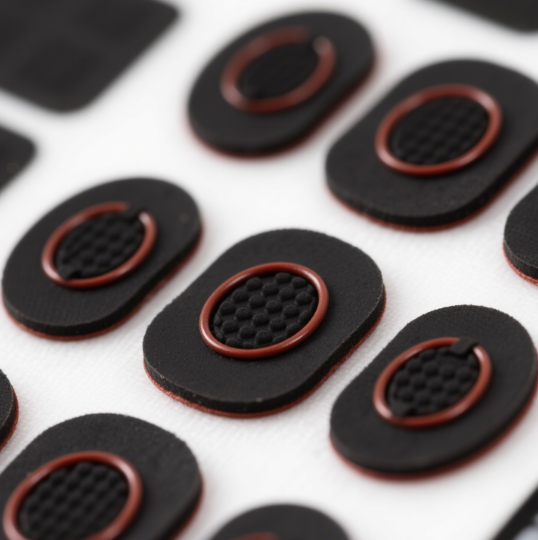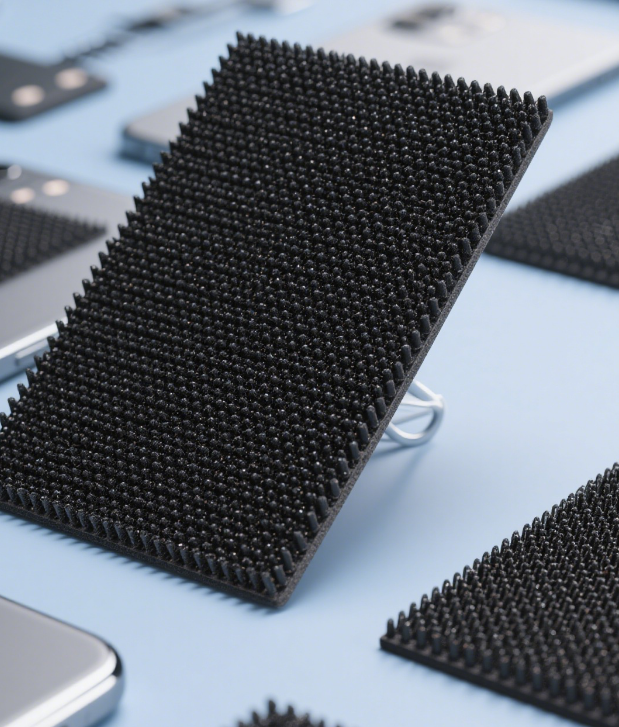carbon fiber conductive rubber
 is a composite material that combines the high electrical conductivity of carbon fiber with the flexibility of rubber. By introducing carbon fiber or other conductive fillers into the rubber matrix, it has properties such as electrical conductivity, thermal conductivity, and weather resistance, while maintaining the elasticity and processability of rubber. The following analysis is carried out from aspects such as material characteristics, preparation process, performance, application scenarios, and development trends:
is a composite material that combines the high electrical conductivity of carbon fiber with the flexibility of rubber. By introducing carbon fiber or other conductive fillers into the rubber matrix, it has properties such as electrical conductivity, thermal conductivity, and weather resistance, while maintaining the elasticity and processability of rubber. The following analysis is carried out from aspects such as material characteristics, preparation process, performance, application scenarios, and development trends:
- Core Characteristics and Material Composition
Material Composition
Matrix Rubber: Commonly used silicone rubber, nitrile butadiene rubber (NBR), fluororubber (FKM), etc., provide elasticity, corrosion resistance, and environmental adaptability.
Conductive Fillers:
Carbon Fiber: High specific strength and high electrical conductivity can significantly reduce the volume resistivity of the material (for example, nickel-plated carbon fiber can reduce the resistivity to as low as 0.02 Ω・cm).
Auxiliary Fillers: Carbon black, graphite, metal powders (such as silver, nickel), etc., enhance the conductive network or reduce costs.
Interface Treatment Agents: Such as silane coupling agents and metal particle pre-sizing agents, which improve the interface bonding between carbon fiber and rubber and enhance electrical conductivity and mechanical properties.
Key Performance
Electrical Conductivity: The volume resistivity can be as low as 0.02 Ω・cm (silicone rubber filled with nickel-plated carbon fiber), meeting the requirements of electromagnetic shielding, sensors, etc.
Mechanical Properties: The tensile strength can reach 3.6 MPa, and the elongation at break is 160%-215%, combining flexibility and strength.
Environmental Adaptability: The operating temperature range is from -55°C to +170°C, resistant to humid heat, acid and alkali corrosion, and suitable for extreme environments.
- Preparation Process and Technological Breakthroughs
Traditional Process
Mixing – Vulcanization Method: Mix carbon fiber and the rubber matrix through an open mill or an internal mixer, and then form it through vulcanization. It is necessary to optimize the dispersion of carbon fiber to avoid agglomeration.
Surface Treatment: Such as oxidation treatment, nickel plating, or coating with conductive metal particles to improve the interface bonding force and electrical conductivity between carbon fiber and rubber.
New Technologies
Pre-sizing Agent Modification: Use a pre-sizing agent containing conductive metal particles (such as epoxy resin + nickel particles) to treat the surface of carbon fiber, and then carry out secondary sizing with RFL emulsion, which significantly improves electrical conductivity and temperature resistance.
Nanocomposite Technology: Introduce carbon nanotubes or graphene to synergistically enhance the conductive network with carbon fiber and further reduce the resistivity.
Challenges and Optimizations
Dispersion Difficulties: Carbon fiber is prone to agglomeration, and ultrasonic dispersion, coupling agent treatment, or nanocomposite technology are required to improve the uniformity.
Cost Control: The price of carbon fiber is relatively high, and the cost can be reduced by using large tow carbon fiber or mixed fillers (such as carbon black + carbon fiber).
III. Application Scenarios and Typical Cases
Electronics and Communication
Flexible Circuits: Used as conductive connection wires for wearable devices, such as the flexible electrodes of smart bracelets.
Electromagnetic Shielding: The shielding seals of electronic device casings and communication base stations can effectively block electromagnetic interference (EMI).
Sensors: Sensitive elements of pressure sensors and strain sensors, which realize signal conversion by using changes in electrical conductivity.
Automotive and Aerospace
Battery Components: Conductive gaskets for new energy vehicle batteries, which have both conductive and buffering functions.
Seals: Conductive sealing strips for aircraft cabin doors and engine components to prevent static electricity accumulation and electromagnetic leakage.
Lightweight Structures: Carbon fiber reinforced rubber composites are used for lightweight automotive components, such as the chassis and body, to reduce energy consumption.
Industrial and Civil Applications
Conductive Rubber Buttons: Conductive contacts of keyboards and remote controls, replacing traditional metal shrapnels.
Antistatic Materials: The floors and workbench surfaces of electronics workshops to prevent static electricity from damaging precision components.
















